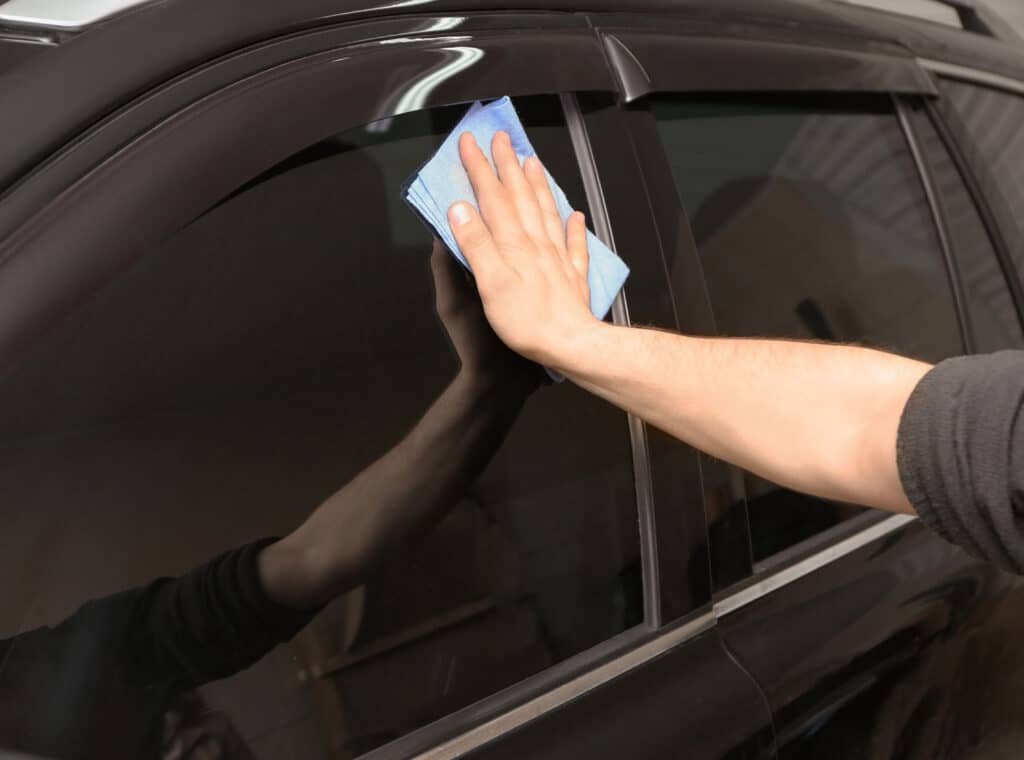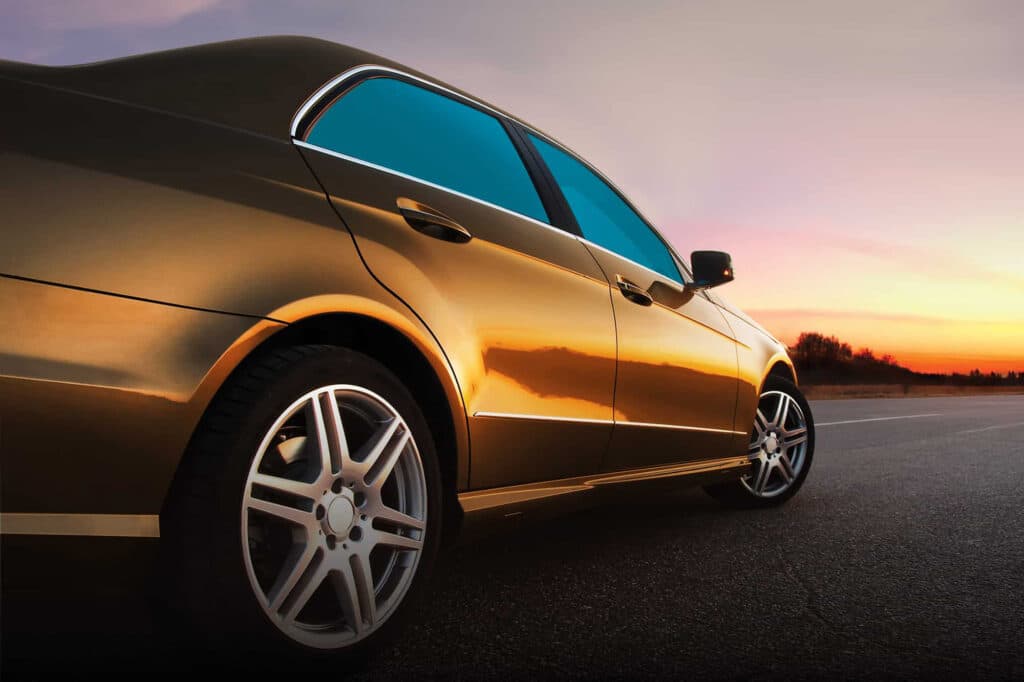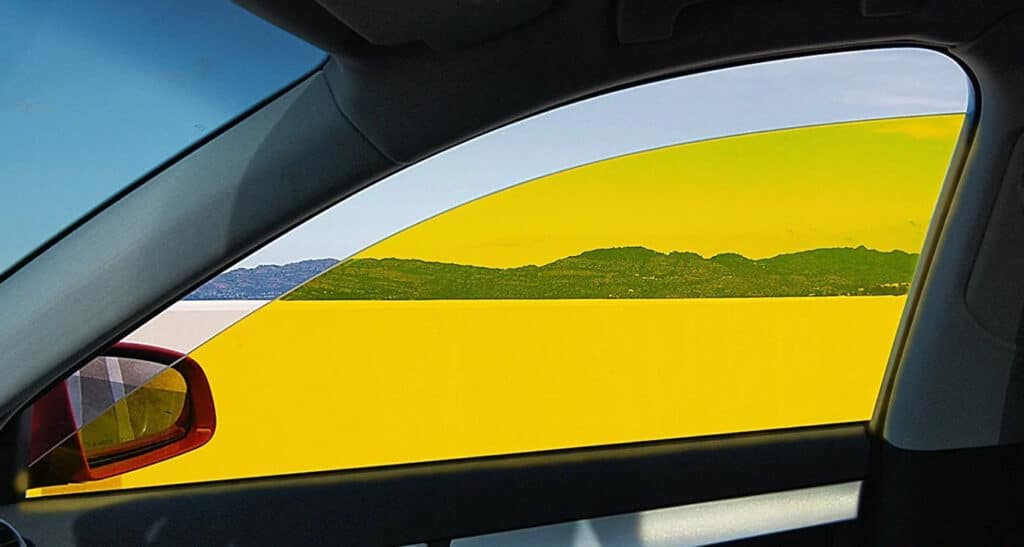With summers in Colorado getting hotter each year, getting your car windows tinted is a good idea. But of course, you want to ensure that it’s done within the confines of the law.
Tinted windows are extremely popular in the automotive world and it isn’t hard to see why — they keep away prying eyes and give you a ton of privacy.
They also keep your car from turning into an oven by lowering trapped heat, and they reduce glare that can be obstructive while driving.
An added benefit is that your car ends up looking quite nice if you select your tint tastefully.
However, just like most other car mods, the use of window tints is regulated by the DMV. Install the wrong kind of tint and you will find yourself on the wrong side of the law.
This makes it supremely important to know what the law does and does not allow when it comes to vehicle window tints.
In this guide, we’ll discuss everything you need to know about tint laws in Colorado.
Is Window Tint Legal in Colorado?

Colorado’s window tint laws were set in place in 1995, with the most recent amendments made by the Colorado General Assembly in 2019’s regular session in the bill numbered HB19-1067.
Tinted windows are legal in Colorado, but there are some caveats in place.
This has to do with the amount of darkness and reflection that’s allowed for each glass surface (windshield, front and passenger side windows, and rear window), as well as any exceptions.
To safeguard drivers as well as oncoming traffic, the rules are pretty stringent. Here’s a breakdown of the Colorado tint laws.
Permitted Window Tint Transparency

Window tint laws concern two components:
- Window darkness and
- Reflection
Window darkness refers to transparency and how dark or light the color of the tint on your window is.
The darker the tint, the lower the visibility is from the outside. Darker windows also allow less light to filter through from the outside.
How does law enforcement know if your windows are beyond the permitted darkness?
That’s because of a measurable variable called called “visible light transmission” or VLT. It refers to the amount of light that a tinted object will permit to pass through.
Dark objects have low VLT, as they allow less light to pass through, and vice versa.
All tint laws use VLT as a reference to define limits and law enforcement officials use handheld devices to instantly measure the VLT of a window and determine whether it’s beyond the legally allowed limit.
Here’s a breakdown of the permitted VLT levels in Colorado for different vehicles.
Sedans
Windshield: 70% VLT is required and the film should be non-reflective. Additionally, the film can only be pasted on the windshield’s top four inches (the “eyebrow” region).
Driver-side windows: 27% minimum VLT is mandated.
Passenger-side windows: 27% minimum VLT is mandated.
Rear window: 27% minimum VLT is mandated.
SUVs and Vans
Windshield: 70% VLT non-reflective tint can be used. Similar to sedans, the film can only be pasted on the windshield’s top four inches (the “eyebrow” region).
Driver-side windows: A minimum of 27% VLT is mandated.
Passenger-side windows: A minimum of 27% VLT is mandated.
Rear window: A minimum of 27% VLT is mandated.
Acceptable Tint Reflection

Now, let’s explore the 2nd component of tint laws — tint reflection. This refers to the amount of light that the tinted film can reflect.
While reflective windows help to reduce glare and are the best option for privacy, they can be problematic for other drivers on the road because they reflect glare onto oncoming traffic.
That’s one of the primary reasons why there are strict laws around tint reflection.
Sedans
Windshield: The tint should be completely non-reflective/non-metallic.
Driver-side windows: Metallic or reflective tint not permitted.
Passenger-side windows: Metallic or reflective tint not permitted.
Rear window: Metallic or reflective tint not permitted.
SUVs and Vans
Windshield: The tint should be completely non-reflective/non-metallic.
Driver-side windows: Metallic or reflective tint not permitted.
Passenger-side windows: Metallic or reflective tint not permitted.
Rear window: Reflective and metallic tints are not allowed on the rear window.
Other Colorado Tint Rules You Need to Know

Here are some additional rules and exceptions to keep in mind when it comes to Colorado tint laws:
- Tint exceptions: If the combined VLT of the windshield and the front side windows are more than 70%, the tint in the passenger and rear windows can be of any VLT percentage.
- Similarly, there should be no tint on the two front windows if the VLT is less than 27% on the rear windows.
- Side mirrors: If the rear windows are tinted, properly functioning dual-side mirrors are a required.
- Colors: Metallic tints, as well as amber and red, are illegal.
- Stickers: Stickers testifying to the legality of the tinting are not required by law but they’re recommended by law enforcement.
- Certificate: The film sold does not need to be certified by its manufacturer, or by the installer.
- Medical exemptions: Colorado doesn’t allow medical exemptions of any sort under tint laws.
- Penalty: A fine between $500 and $5,000 can be imposed on you under charges of a misdemeanor or Class B traffic infractions.
State of Colorado Info

Colorado, one of the country’s Mountain states, is also known as Boulder State, owing to the presence of the Southern Rockies, the Great Plains, and the Colorado Plateau.
It shares borders with Arizona, Utah, New Mexico, Oklahoma, Kansas, Nebraska, and Wyoming, and is popular for the abundance and variety of natural beauty it holds.
Population: 5,812,069
Capital: Denver
Area: 104,094 mi²
Registered vehicles: 1,807,777
Total lane miles: 185,486 mi
Number of highways: 5
Tint Law References: Colorado General Assembly

